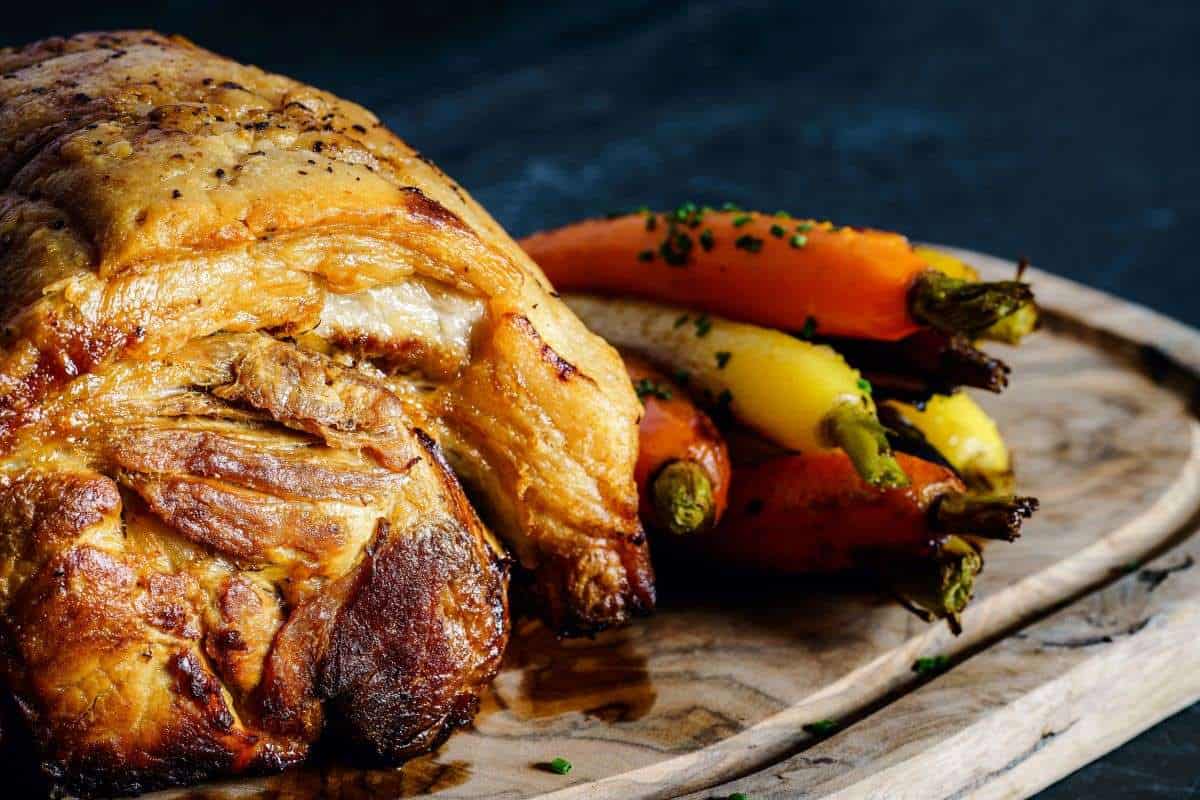
Roast Pork Internal Temperature
Roasting is one of the best ways to cook pork. This method of cooking gives you soft meat with a crunchy exterior. The contrast in texture makes it a joy to eat, especially on special occasions. Whether you are cooking roast pork for a Sunday dinner or a family gathering, make sure you cook it perfectly by knowing the correct roast pork internal temperature.
Table of Contents
How to Cook the Best Roast Pork
The first step to getting the best-cooked roast pork is in choosing the right cut. The choice of the cut of pork you use for roasting depends on your preferences. However, the best cuts for roasting pork are the pork leg and loin. These parts are known for their lean meat and excellent crackling results. Plus, they are easy to serve as a whole piece of meat when you are done cooking them.
If you want a richer pork roast, you can go for the shoulder or belly. The higher fat content on these pork cuts means that the fat will render in the cooking process so you can achieve perfectly tender meat. A pork fillet is the easiest one to cook when you want to roast pork. It takes no more than 40 minutes to cook, which makes it ideal for a weeknight dinner. Pork fillet is also leaner than most pork cuts so it cooks nicely.
Another factor that will impact the cooking of your pork is the thickness or size of the cut. When choosing the right size of pork to roast, go for the larger cut. The meat will shrink in size as it cooks, especially if you opt for cuts with a higher fat content. Fat is also critical when you want to achieve good crackling on your pork.
The next step in roasting perfect pork is to prepare the meat. Make sure that the meat is thoroughly dry to achieve that extra crackling on the roast. Ideally, you should leave the meat out at room temperature for about an hour before you intend to cook it in the oven. You should adjust the cooking time of the roast pork according to the thickness of the meat.
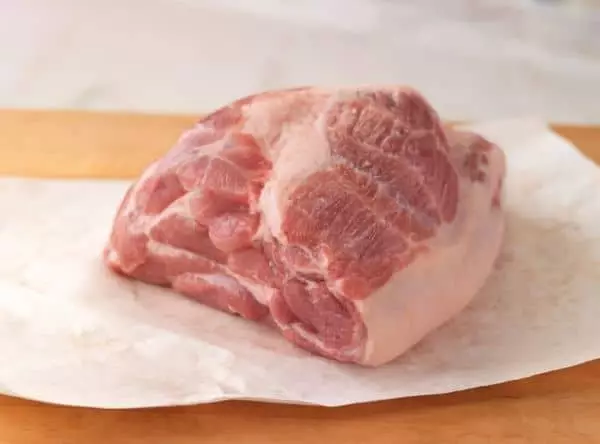
What is the Ideal Roast Pork Internal Temperature?
The general internal temperature for pork is 160 F (71 C). However, the USDA recommendation is much lower at 145 F (62 C). This temperature gives you tender and juicy pork meat. Cooking pork at this temperature gives the meat a slight pinkish color in the middle but it is cooked through enough that it is safe to eat. However, you should adjust the cooking time when it comes to thicker cuts of pork since they will take longer to achieve a safe internal temperature for the pork.
The ideal roast pork internal temperature is 155 F (68 C). Use a meat thermometer to check for the internal temperature of the roast pork. Once the thermometer says 145 F, take it out of the oven. It should be safe to consume and the meat will continue to cook until it naturally reaches 155 F, even if you take it out of the oven.
According to the USDA, pork that is slightly pink in the middle is safe to eat. The recommended internal temperature for roast pork also ensures that the meat is juicy and tender. The revised guideline from the USDA in cooking pork only applies to whole cuts, such as roast pork or pork chops. All ground meats and pork should be cooked to 160 F (71 C) to be safe.
Cooking Times for Roast Pork
With the new roast pork internal temperature set at 145 F, how long will it take to achieve that temperature? Preheat your oven to 325 F (163 C).
If you are roasting a large piece of pork meat, you must set the oven to a high heat for the first 20 minutes. This high heat setting will allow the heat to penetrate the meat immediately. It is also crucial if you want to achieve the perfect crackling, which can be done during the initial stage of the cooking process. During the first few minutes of cooking in the oven, the fat beneath the rind will render and the meat will baste in its own fat. The rendering of the fat is crucial to achieving that crispy exterior of the roast pork.
After the first 20-30 minutes, you can lower the heat in your oven. You can also slightly open the oven door to allow the temperature to drop quickly.
You should not cover the pork meat while it’s cooking in the oven. Otherwise, you will end up with a soggy exterior instead of a crisp one. You don’t need to brush the pork while it’s cooking because the fat will help to keep the meat moist.

Checking the Roast Pork for Doneness
Using a meat thermometer is a great way to check the roast pork for doneness. The meat thermometer should read 145 F before you take it out of the oven. A meat thermometer is a handy kitchen tool that will give you accurate temperature readings so you know when the pork is ready. Use an instant-read thermometer so that you know instantly when you have achieved the desired internal temperature and when it’s ready to take it out. Make sure to leave the thermometer in for at least 20 seconds to allow for a proper reading.
You know that the pork meat is done when the juices run clear (meaning, it isn’t pink). You should never serve rare pork. The ideal cook is medium rare so that it is still juicy and tender.
Conclusion
If you like biting into a juicy and flavorful roast pork, it’s important to remember the ideal roast pork internal temperature. Take the guessing game out of cooking with a meat thermometer that tells you the temperature of the meat exactly. Temperature management of the meat is crucial not just for flavor, but also for your own safety when eating any kind of meat, not just pork.
One Comment
Comments are closed.
Discover Other ChefsTemp Products
Discover more recipes and learn kitchen tricks by joining our cooking family on Facebook.
You may also like:
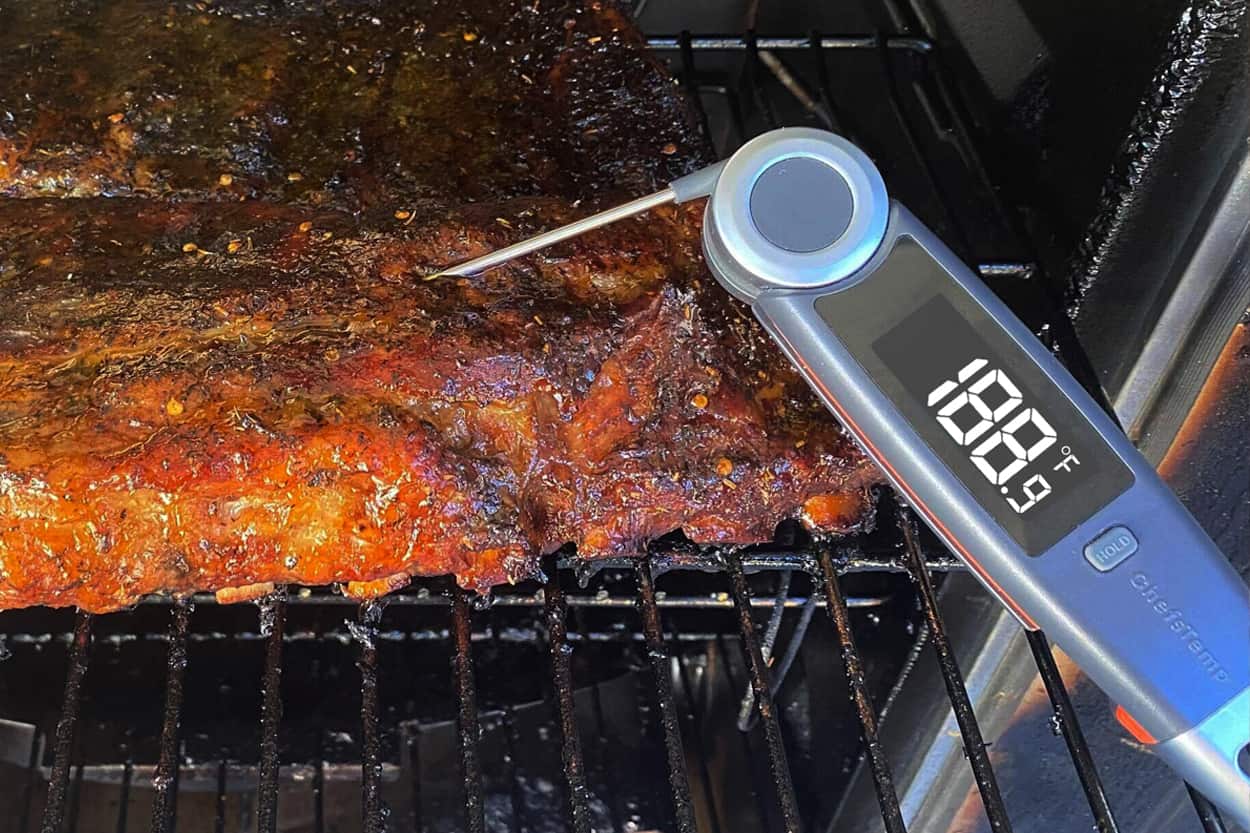
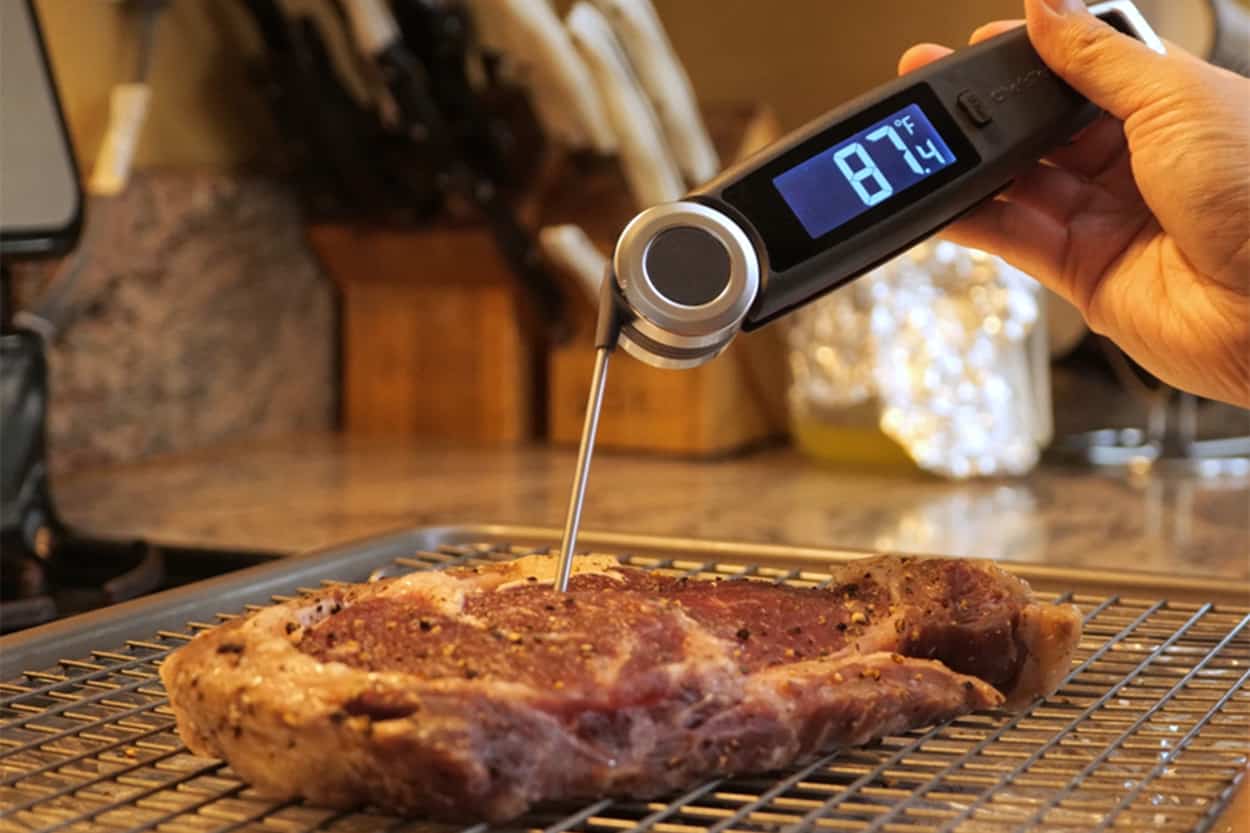
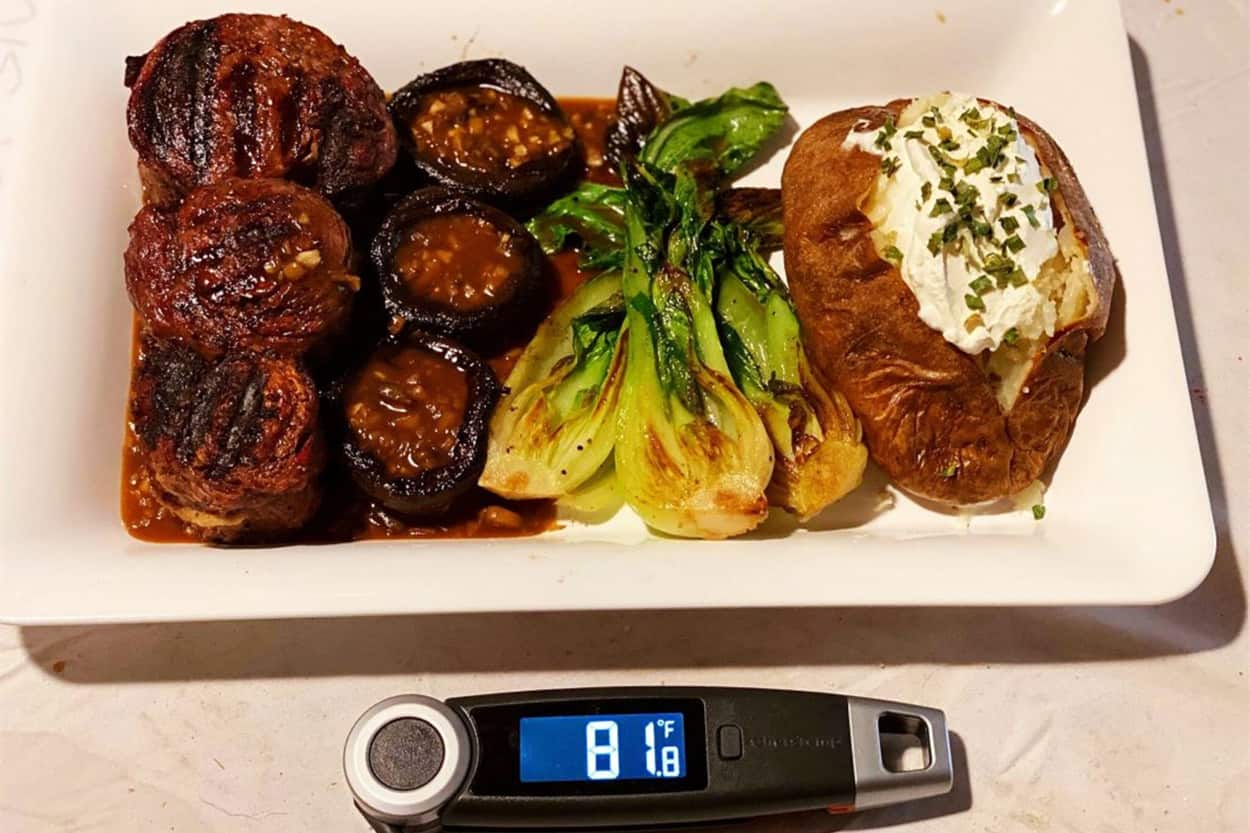
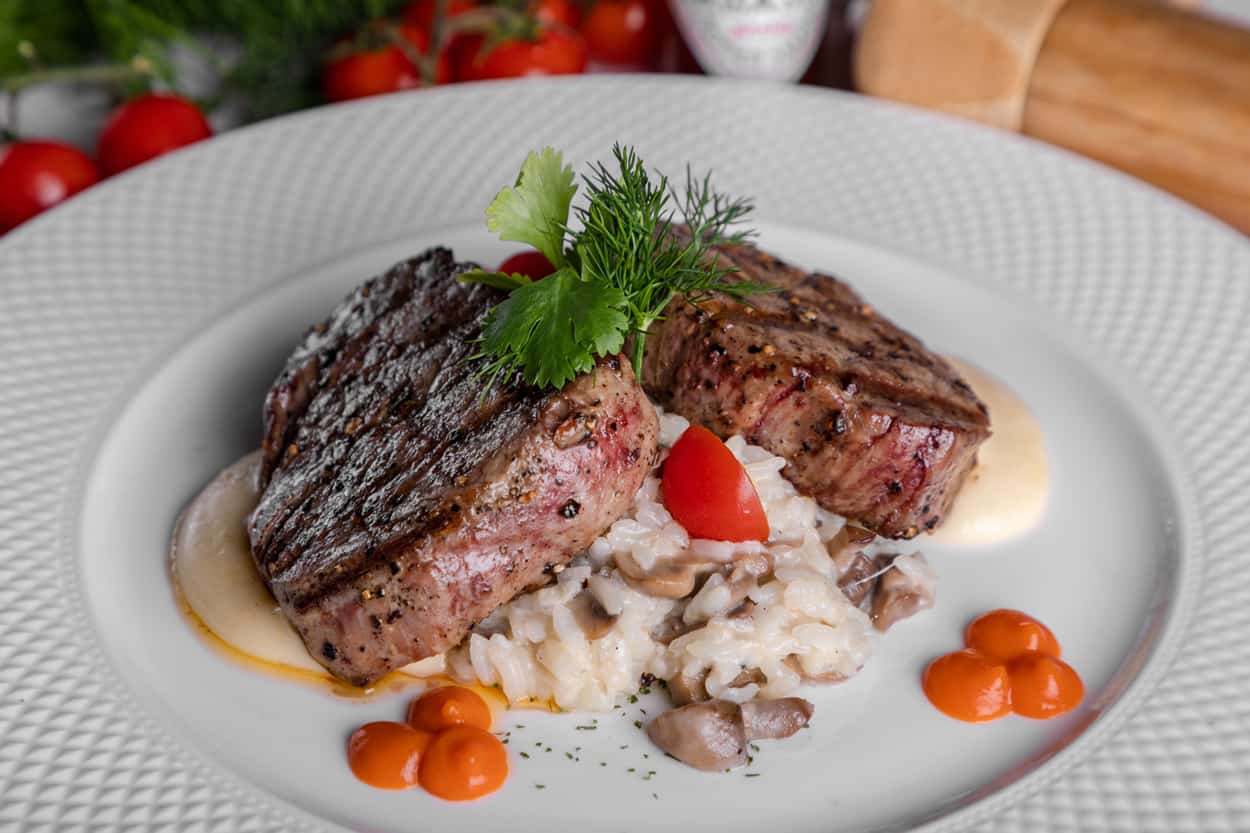









[…] the instant read thermometer. You can stop the cooking process if the temperature displayed is the recommended internal temperature for that food. It takes the guesswork out of checking your food to ensure it is ready and safe to […]